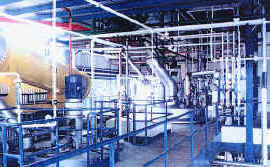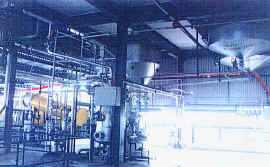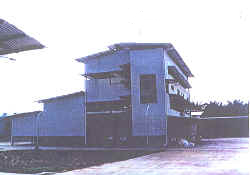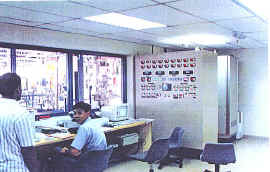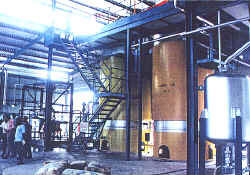|
High Temperature Resin Processing |
|
|
|
|
|
Reactor Floor
Reactor Overheads
Kettle House
Reactor Floor & Melter
Control Room
Reactor Room & Tanks
Boom Drum Filling
|
Fast Processing of Polyesters and Alkyds
We at Coatings & Resins International Ltd. have spent most of our careers refining product formulation and design, plus the manufacturing of synthetic resins by reactor design and processing methods to reduce cycle time and improve reproducibility.
The modern trend is toward aqueous systems and we now spend most of our time developing emulsion polymers and their coatings for the decorative, industrial, printing ink and adhesives markets. These include self-condensing polymers with novel curing mechanisms.
However we retain strong ability within traditional solvent based areas and have a specialty in formula optimization and cycle time improvement for high temperature resin plants.
This has been achieved with esters principally by utilising high solvent volumes to remove water of reaction and so shift the equilibrium to the right.
Numerous other benefits have accrued from these design refinements including better reproducibility as the occurrence of side reactions is minimised and molecular weight spread is narrowed. End point control is also more easily determined as the viscosity/A.V. relationship is very predictable.
Reactors designed in this way are also capable of making a wide range of other resins including rosin esters, solution acrylics, epoxy esters, electrodeposition primer vehicles, polyurethanes, nitrogen resins, metal soaps, specialist wetting agents and thickeners, even some water-based emulsions.
The initial capital cost of such flexible plants is on the higher side but payback in terms of cycle time reduction from in excess of 24 hours to from 8 to 12 hours is rapid. Benefits are also realised with regard to pollution control.
This can be achieved in a number of ways including the use of catalysts, pressure process to raise the boiling point of some low boiling glycols, using fatty acids instead of oils in alkyds, acidolysis instead of alcoholysis in very long oil alkyds but the most successful method has been to efficiently remove the water of reaction.
The options available for achieving this include vacuum processing, high inert gas sparge rates and solvent processing.
The first two options suffer from the problem of overhead blockages, high pollution control costs and, with gas sparging, high inert gas costs.
Solvent processing can also suffer from overhead blockages and, with some high heat distortion temperature polyesters, the problem of solvent removal at processing end.
The high solvent method we have utilised potentially exacerbates these difficulties but the complimentary facets of the design ensure blockages are rare and good vacuums will achieve adequate solvent removal where required.
To achieve high reflux rates critical design elements include hot oil heater design, reactor heat transfer efficiency, riser particulate entrainment system, condenser efficiency, separator design, reflux pumping system, reactor temperature control, reactor cleaning system, reactor discharge system, vent control system and downstream tankage, filtration and filling to handle the rapid throughput.
Such systems also allow for the introduction of molten phthalic anhydride at reaction temperature in oil based alkyds hence eliminating cooling and reheating time. Very few reactor designs can allow this activity.
Saturated and unsaturated polyesters involving iso- and terephthalic and low boiling glycols e.g. propylene glycol, benefit only slightly in their initial stages from solvent processing due to the large amount of inherent glycol reflux. However they do benefit in processing time, colour and molecular weight spread and reproducibility by introducing solvent as early as possible which can be from commencement with appropriate solvent selection and partial condenser operation.
Using solvent reflux, operating under pressure and employing, in two stage isophthalic unsaturated polyesters, high A.V. maleic addition, best cycle times of 11 - 12 hrs empty to empty have been achieved on reactors up to 15 tonnes so far.
Similarly polyesters designed for areas where good colours are essential benefit from high solvent processing e.g. casting operations, polyesters for urethanes, overprint varnishes etc..
Since only low inert gas sparge rates are employed, gaseous pollution is minimal and reflux solvents are recycled or often can be incorporated as part of the dilution solvent. |
|
Coatings & Resins International Ltd. 23 Pukemiro Street, PO Box 13253 Onehunga, Auckland, New Zealand ph +64 9 622-3860 fax +64 9 634-6100 email coatings.resins@xtra.co.nz |
|


